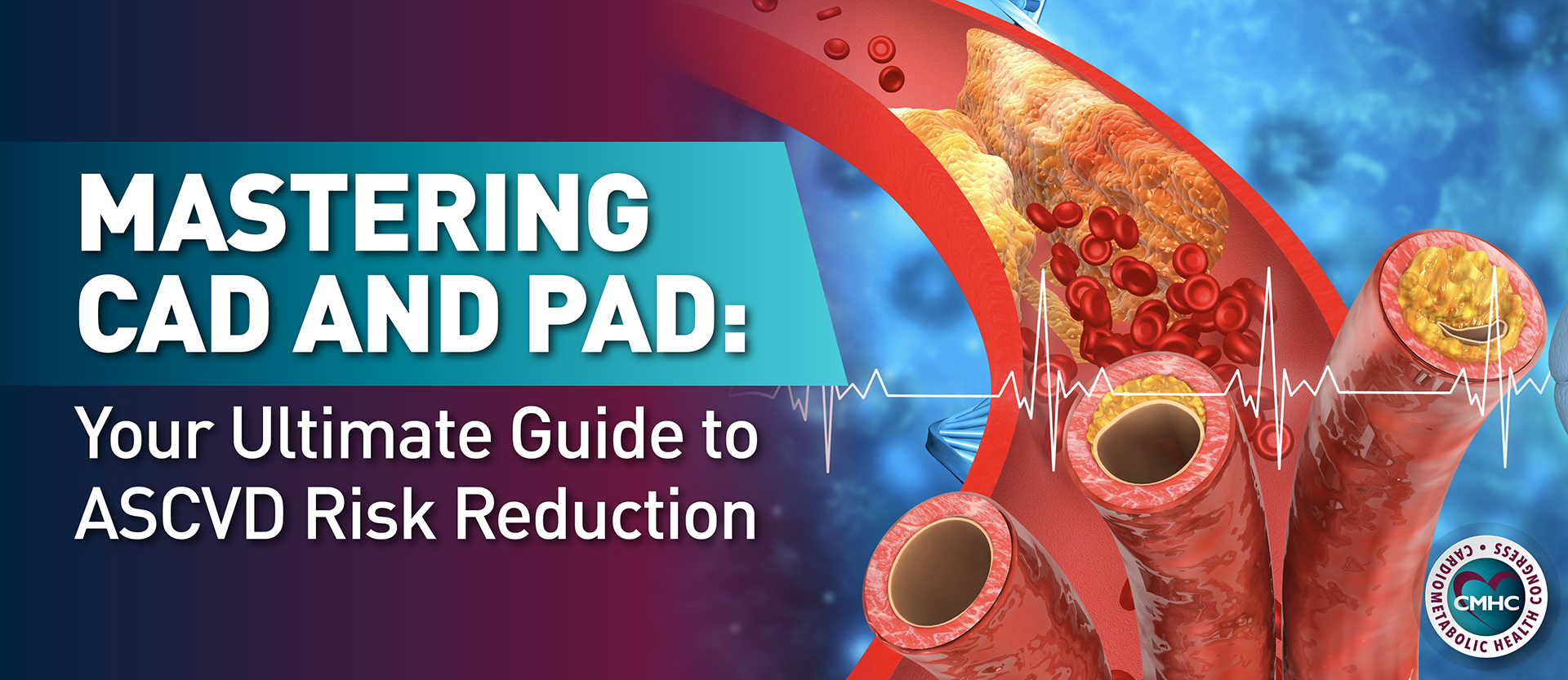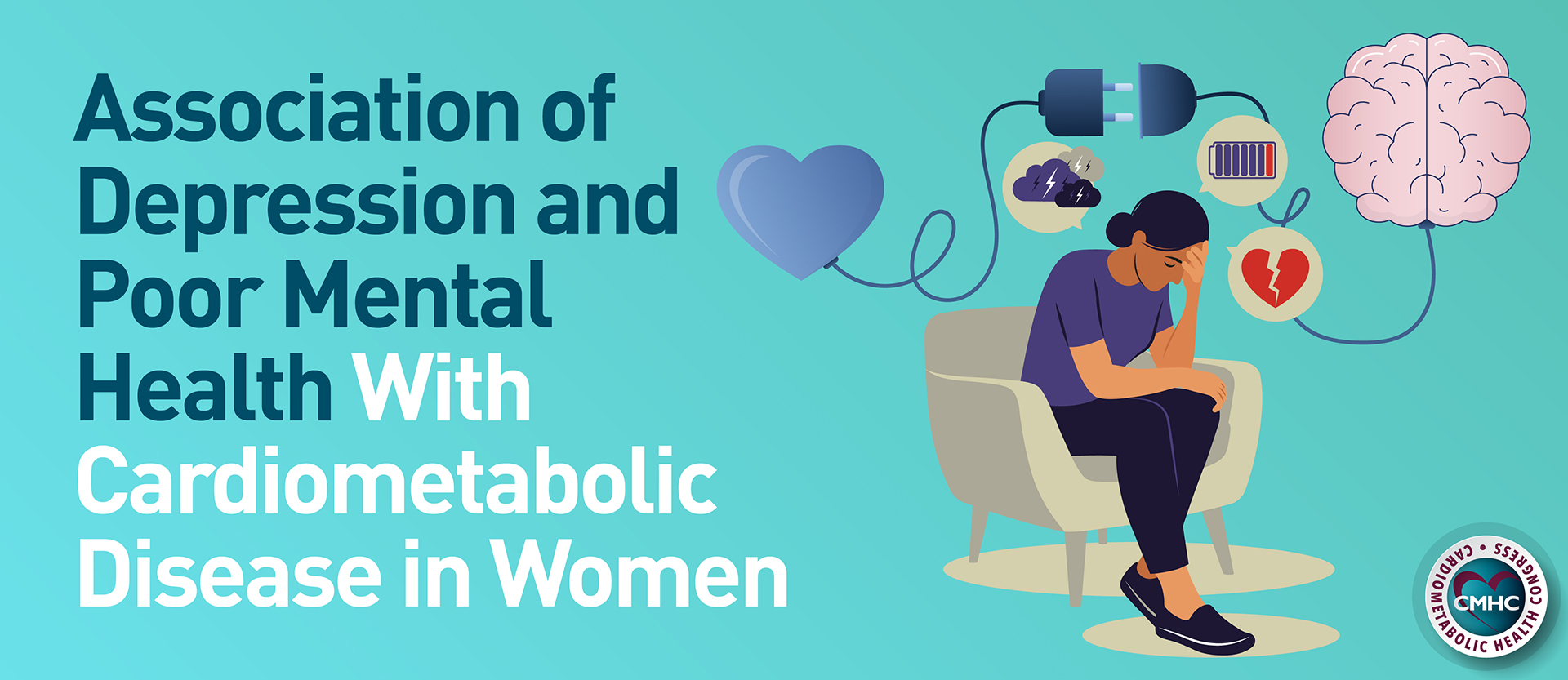In today’s fast-paced healthcare environment, tackling the intricacies of atherosclerotic cardiovascular disease (ASCVD) is a daunting task, especially for those dealing with coronary artery disease (CAD) and peripheral artery disease (PAD). These conditions not only have overlapping risk factors but also significantly increase the chances of major adverse cardiovascular events (MACE).
As a healthcare provider, it’s crucial to have practical approaches for diagnosing and treating CAD and PAD. This guide highlights the paramount importance of thorough risk assessment and personalized therapeutic strategies.
Precision Targeting: Identifying Patients with the Highest ASCVD Risk
The 2023 ACC/AHA Chronic Coronary Disease Guidelines outline key risk factors associated with chronic coronary disease (CCD), including elevated BMI, prior myocardial infarction (MI), percutaneous coronary intervention (PCI), coronary artery bypass grafting (CABG), heart failure, atrial fibrillation/flutter, diabetes, and dyslipidemia. Smoking status (current or former) is a risk factor for chronic kidney disease (CKD), while depression and poor medication adherence are factors for peripheral artery disease (PAD).
In patients with coronary artery disease (CAD), thorough risk assessment is essential. This involves integrating information from noninvasive and/or invasive cardiovascular diagnostic tests. Validated risk scores can further categorize patients into different risk groups, aiding in prognosis evaluation.
Patients are stratified based on their yearly risk for cardiovascular death or nonfatal MI, classified as Low Risk (<1%), Intermediate Risk (1% to 3%), and High Risk (>3%). This stratification guides tailored management plans, aiming to optimize outcomes and alleviate the burden of ASCVD.
Moreover, the 2018 ACC/AHA Lipid Guidelines delineate specific criteria for identifying very high-risk patients with atherosclerotic cardiovascular disease (ASCVD), characterized by:
Major ASCVD Events:
Recent acute coronary syndrome (ACS) within the past 12 months
History of myocardial infarction (MI) beyond recent ACS
History of ischemic stroke
Symptomatic peripheral arterial disease (PAD) (e.g., history of claudication with an ankle-brachial index (ABI) <0.8 or previous revascularization/amputation)
High-Risk Conditions:
Age ≥65
Heterozygous familial hypercholesterolemia
History of prior coronary artery bypass graft surgery (CABG) or percutaneous coronary intervention (PCI) outside of major ASCVD events
Diabetes mellitus
Hypertension or chronic kidney disease (CKD) with an estimated glomerular filtration rate (eGFR) of 15-59 mL/min/1.73m²
Current smoking
Persistently elevated LDL-C (>100 mg/dL) despite maximally tolerated statin and ezetimibe therapy
History of congestive heart failure
Refining Antithrombotic Regimens for High-Risk ASCVD Patients
Antithrombotic therapies stand as linchpins in preventing atherosclerotic cardiovascular disease (ASCVD) events, surpassing conventional interventions like diet, exercise, smoking cessation, and cholesterol management.
For high-risk patients, combining antithrombotic agents like Rivaroxaban 2.5 mg twice daily (BID) with aspirin (ASA) proves beneficial based on the results of the COMPASS Trial.
Insights from the COMPASS Trial
The COMPASS Trial, a randomized study comprising 27,395 patients with chronic coronary disease (91%) and peripheral artery disease (27%), investigated the efficacy of three treatment arms: Rivaroxaban 2.5 mg BID along with Aspirin 100 mg once daily, Rivaroxaban 5 mg BID, and Aspirin 100 mg once daily.
Risk Reduction in MACE:
Rivaroxaban + Aspirin vs. Aspirin alone: 24% risk reduction (HR 0.76, p=0.002)
Rivaroxaban + ASA vs. Aspirin alone: 42% risk reduction (HR 0.58, p<0.0001)
Rivaroxaban + Aspirin vs. ASA: 14% risk reduction (HR 0.86, p=0.14)
These findings underscore the substantial potential of combination therapy in mitigating cardiovascular death, stroke, and myocardial infarction, offering pivotal insights for medical research and therapeutic decision-making.
High-Risk Populations in COMPASS
Identified high-risk features include involvement of ≥2 vascular beds, history of heart failure (HFpEF), low eGFR < 60 ml/min, and diabetes. Notably, 60% of the total patient population exhibited high-risk features, with 75% of primary events occurring in these patients. These findings underscore the imperative of tailored antithrombotic therapy for enhancing outcomes in high-risk ASCVD patients.
Acknowledging Risks Associated with Antithrombotic Therapy in Women
When selecting antithrombotic therapies, it is crucial to consider gender-specific risks, particularly in women. One notable concern is the risk of abnormal uterine bleeding associated with these medications.
Data from four real-world databases—MarketScan Commercial, MarketScan Medicaid, MarketScan Medicare, and Optum—compare the use of three antithrombotic medications, Warfarin, Apixaban, and Rivaroxaban, across various indications.
Findings:
Rivaroxaban vs. Warfarin: The hazard ratio is 2.03, suggesting that the risk of abnormal uterine bleeding is approximately twice as high for patients taking Rivaroxaban compared to those taking Warfarin.
Apixaban vs. Warfarin: The hazard ratio is 1.13, indicating a slightly higher risk of abnormal uterine bleeding for patients taking Apixaban compared to those taking Warfarin.
Rivaroxaban vs. Apixaban: The hazard ratio is 2.25, indicating that the risk of abnormal uterine bleeding is more than twice as high for patients taking Rivaroxaban compared to those taking Apixaban.
These findings underscore the necessity of factoring in gender-specific risks, notably the heightened incidence of abnormal uterine bleeding in women when selecting antithrombotic therapy.
Unlocking PAD: Key to ASCVD Risk Management
Peripheral Artery Disease (PAD) stands out as a notable risk factor for atherosclerotic cardiovascular diseases (ASCVD), underscoring the importance of comprehending its impact on cardiovascular health to effectively manage associated risks.
Insights gleaned from the EUCLID Trial shed light on PAD’s influence on cardiovascular outcomes. This trial, comparing ticagrelor with placebo in stable PAD patients, reinforces PAD’s significant role in shaping cardiovascular health. Key findings reveal gender disparities in the incidence rates of major adverse cardiovascular events (MACE), emphasizing the substantial impact PAD exerts on both men and women’s cardiovascular outcomes.
Additionally, disparities in all-cause mortality rates further underline the urgency for timely PAD diagnosis and management to enhance survival rates.
Deciphering PAD with the Ankle-Brachial Index (ABI)
The Ankle-Brachial Index (ABI) serves as a fundamental diagnostic tool for PAD, necessitating a thorough understanding of ABI values and their implications for precise diagnosis and management.
Interpreting ABI values:
Non-compressible Arteries: ABI > 1.4 suggests non-compressible arteries, prompting Toe-Brachial Index (TBI) evaluation for further assessment.
Normal: ABI between 1.0 and 1.4.
Borderline: ABI between 0.91 and 0.99, warranting normal treatment with vigilant monitoring.
Abnormal: ABI ≤ 0.90 indicates PAD presence.
Optimal ABI Testing: ABI testing should be conducted solely in the presence of risk factors, symptoms, or examination findings suggestive of PAD, avoiding unnecessary testing as per Class III recommendation.
This methodical approach underscores the significance of identifying PAD as a pivotal ASCVD risk factor, elucidating diagnostic tools available, and delineating guidelines for managing this condition to enhance patient outcomes.
The 2024 ACC/AHA/AACVPR/APMA/ABC/SCAI/SVM/SVN/SIR/VESS Guideline for the Management of Lower Extremity Peripheral Artery Disease (ACC/AHA/Multisociety PAD Guideline) recognizes PAD’s paramount public health importance, furnishing comprehensive risk assessment recommendations.
Key Takeaways:
Coronary artery disease (CAD) and peripheral artery disease (PAD) significantly heighten the risk of atherosclerotic cardiovascular disease (ASCVD). Precise diagnosis of PAD using the Ankle-Brachial Index (ABI), coupled with a thorough assessment of signs, symptoms, and examination findings, is paramount.
The combination of Rivaroxaban 2.5 mg twice daily (BID) with aspirin (ASA) has demonstrated substantial efficacy in reducing the incidence of major adverse cardiovascular events (MACE). Nonetheless, vigilant monitoring for potential side effects, notably abnormal uterine bleeding, especially in women, is imperative to ensure the safety and efficacy of treatment.


















